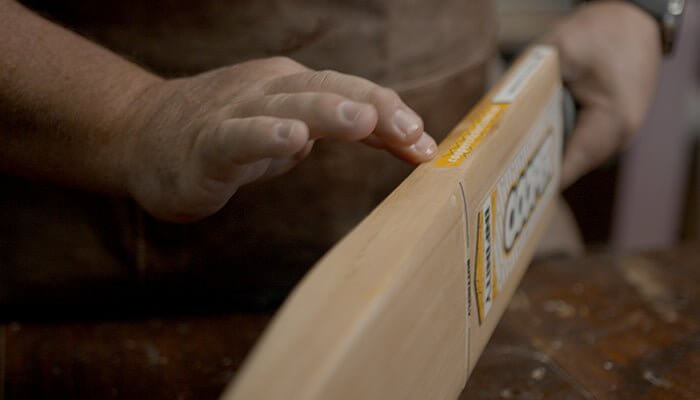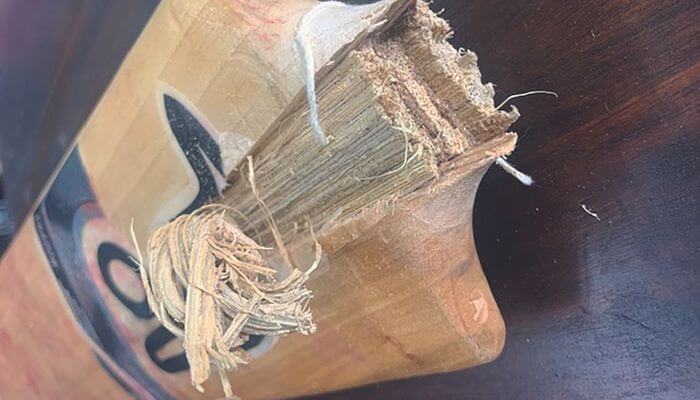The reason we ‘knock in’ a cricket bat is to enable it to withstand the pressure of being repeatedly hit by cricket balls without breaking. No matter how keen you are to try out your new bat in the nets, this is a step that you must not skip! To explain how it works, I’m going to start right at the very beginning of how cricket bats are made, so get comfortable!
When the piece of wood for your cricket bat gets cut from the tree, it’s like any piece of wood. It will break if you bash it hard enough against the something hard. If you tried to use it as a cricket bat, it would quickly start to crack and wouldn't give you much rebound.
So, when a piece of timber is being made into a cricket bat, it is pressed under tonnes of pressure to compress five to seven millimetres of the top layer of the timber. This pressure creates a harder layer for the ball to impact and rebound from; it absorbs the shock of the ball and then sends it back out.
In the past, the pressing roller used to do this was curved from edge to edge so the finished piece of timber would end up with a curved face. It was then necessary to compress those edges by ‘knocking them in’, because these edges didn’t receive as much pressure as the middle of the bat. To do this they would deflect a mallet off the edge of the bat, like when you're edging a ball.
These days, bat faces are much flatter, with only a slight curve. This extra flat area provides a bigger surface area for the ball to impact. And the bigger edges on today’s bats provide a greater depth of timber for the bat to absorb the impact of the ball, and then rebound it. This is why players can hit the ball so much further now, without having to actually middle the ball.
However, like the old bats, the very corners of today’s bat edges and toe don't get as much compression as the face of the bat. This is why ‘knocking in’ is still very important and it's still usually done with a mallet.
To make sure the bat doesn’t break when under pressure from a cricket ball hitting it 1,000 times over, you need to compress the edges of the new bat, along with the first eight to 10 centimetres of the toe. If your bat is knocked in adequately, it will not break, and you will get a much longer life from your bat.
I recommend spending around 1.5 hours knocking in your bat, concentrating on those edge and toe areas.
Next steps? Ideally, start off using your bat in the nets with older balls and if you cannot see any seam marks on the bat, move to newer balls. If you are noticing seam marks, you need more knocking in.
Did you know, if you do not knock in your bat adequately and it breaks, it will most likely not be covered under warranty? At Cooper Cricket, we offer a knocking in service as an option with all our new bat purchases, and we will also knock in other brands of cricket bat, so wherever you get your bat, we can get it ready for you.
To learn how to knock in a bat yourself, watch our instructional video.




Leave a comment
All comments are moderated before being published.
This site is protected by hCaptcha and the hCaptcha Privacy Policy and Terms of Service apply.